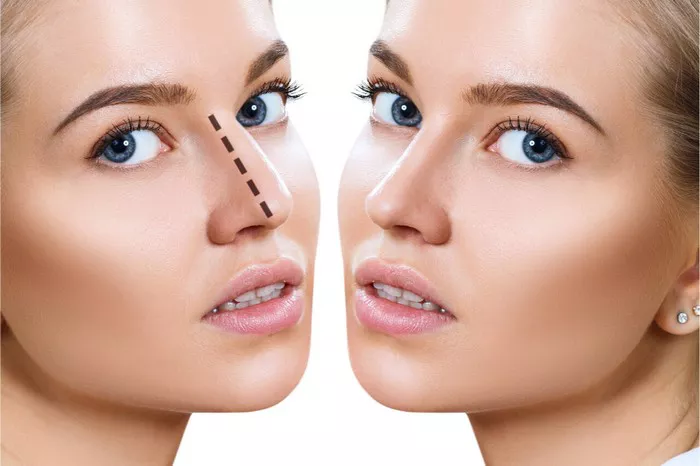Nose trimming, often referred to as rhinoplasty, is a popular cosmetic procedure aimed at reshaping the nose for aesthetic or functional purposes. This article delves into the essential aspects of nose trimming, shedding light on what it involves, why people choose to undergo it, and what to expect before, during, and after the procedure.
1. Understanding Nose Trimming: What Is Rhinoplasty?
Definition and Scope
Rhinoplasty is a surgical procedure designed to change the shape, size, or proportions of the nose. It can be performed for cosmetic reasons, such as improving the appearance of the nose, or for medical reasons, such as correcting breathing problems or repairing deformities caused by trauma or birth defects.
Types of Rhinoplasty
Cosmetic Rhinoplasty: Focuses on enhancing the appearance of the nose by altering its shape, size, or overall aesthetic.
Functional Rhinoplasty: Aims to correct nasal breathing issues, often involving the internal structures of the nose.
Reconstructive Rhinoplasty: Involves rebuilding the nose’s structure after trauma, surgery, or congenital disabilities.
2. The Reasons Behind Nose Trimming
Aesthetic Motivations
Many individuals opt for rhinoplasty to achieve a more balanced facial appearance. Common aesthetic reasons include:
Reducing or increasing the size of the nose.
Changing the shape of the nasal tip.
Narrowing the nostrils.
Altering the angle between the nose and the upper lip.
Medical Indications
Rhinoplasty can also address several medical concerns, such as:
Deviated septum causing breathing difficulties.
Nasal fractures that have not healed correctly.
Congenital disabilities affecting nasal function.
Chronic nasal congestion unresponsive to other treatments.
See Also: 6 Best Times to Get Rhinoplasty
3. Consultation and Planning for Rhinoplasty
Initial Consultation
The first step in the rhinoplasty journey is a thorough consultation with a qualified surgeon. During this meeting, the surgeon will:
Assess the patient’s medical history.
Conduct a physical examination of the nose.
Discuss the patient’s goals and expectations.
Explain the potential risks and benefits of the procedure.
Preoperative Planning
Detailed planning is crucial for a successful rhinoplasty. This phase includes:
Photographic Analysis: Taking photos of the nose from different angles to aid in surgical planning.
Simulation Software: Using digital imaging to show potential outcomes.
Medical Clearance: Ensuring the patient is fit for surgery through various medical tests.
4. The Rhinoplasty Procedure: What to Expect
Types of Anesthesia
Rhinoplasty can be performed under local anesthesia with sedation or general anesthesia. The choice depends on the complexity of the surgery and patient preference.
Surgical Techniques
Open Rhinoplasty: Involves an incision across the columella (the tissue between the nostrils) to provide better visibility and access to the nasal structures.
Closed Rhinoplasty: All incisions are made inside the nostrils, leaving no visible scars. This technique is suitable for less complex cases.
Surgical Steps
Incision: Depending on the chosen technique, incisions are made to access the underlying nasal structures.
Reshaping: The surgeon reshapes the bone and cartilage to achieve the desired outcome.
Correction: If needed, structural problems like a deviated septum are corrected.
Closure: Incisions are closed, and the nose is supported with a splint.
5. Recovery and Postoperative Care
Immediate Postoperative Care
After the surgery, patients can expect:
Swelling and Bruising: These are common and usually peak within the first few days.
Nasal Packing: Some patients may have packing inside the nose to support the new structure and minimize bleeding.
Splint and Bandages: A nasal splint is often placed to maintain the shape during healing.
Recovery Timeline
First Week: Most swelling and bruising subside, and external splints are removed.
Weeks 2-4: Continued reduction in swelling, with most normal activities resumed.
Months 3-6: Subtle swelling persists, but the nose takes its final shape.
One Year: Full healing, with final results visible.
Postoperative Instructions
Avoiding Strenuous Activities: For at least 4-6 weeks to prevent complications.
Sleeping with Head Elevated: To reduce swelling.
Avoiding Blowing the Nose: To protect the healing tissues.
Follow-up Visits: Regular check-ups with the surgeon to monitor healing.
6. Risks and Complications of Rhinoplasty
Common Risks
Infection: Rare but possible, managed with antibiotics.
Bleeding: Some bleeding is normal, but excessive bleeding needs medical attention.
Adverse Reaction to Anesthesia: Monitored and managed by the anesthesiologist.
Potential Complications
Unsatisfactory Results: May require revision surgery.
Scarring: More common with open rhinoplasty, though usually minimal.
Nasal Obstruction: Due to swelling or internal scarring, typically temporary.
Minimizing Risks
Choosing a board-certified and experienced surgeon is crucial. Adhering to preoperative and postoperative instructions also plays a significant role in minimizing risks.
7. Results and Longevity of Rhinoplasty
Immediate vs. Long-Term Results
Immediate: Initial results can be seen once the splint is removed, but swelling may obscure the final outcome.
Long-Term: Final results are usually evident within a year as all residual swelling subsides.
Longevity
Rhinoplasty results are generally permanent. However, factors like aging, trauma, or lifestyle can affect the nose’s appearance over time.
Patient Satisfaction
Most patients report high satisfaction with their rhinoplasty results. Realistic expectations and clear communication with the surgeon are key to achieving desired outcomes.
Conclusion
Nose trimming, or rhinoplasty, is a sophisticated surgical procedure that offers both aesthetic and functional benefits. Understanding the procedure, from consultation to recovery, is essential for anyone considering this transformative surgery. By being informed and prepared, patients can achieve the best possible outcomes and enjoy the enhanced confidence that comes with a well-proportioned nose.
Related topics:

